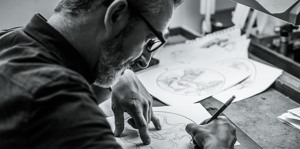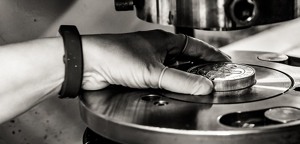Tavex uses cookies to ensure website functionality and improve your user experience. Collecting data from cookies helps us provide the best experience for you, keeps your account secure and allows us to personalise advert content. You can find out more in our cookie policy.
Please select what cookies you allow us to use
Cookies are small files of letters and digits downloaded and saved on your computer or another device (for instance, a mobile phone, a tablet) and saved in your browser while you visit a website. They can be used to track the pages you visit on the website, save the information you enter or remember your preferences such as language settings as long as you’re browsing the website.
| Cookie name | Cookie description | Cookie duration |
|---|---|---|
| tavex_cookie_consent | Stores cookie consent options selected | 60 weeks |
| tavex_customer | Tavex customer ID | 30 days |
| wp-wpml_current_language | Stores selected language | 1 day |
| AWSALB | AWS ALB sticky session cookie | 6 days |
| AWSALBCORS | AWS ALB sticky session cookie | 6 days |
| NO_CACHE | Used to disable page caching | 1 day |
| PHPSESSID | Identifier for PHP session | Session |
| latest_news | Helps to keep notifications relevant by storing the latest news shown | 29 days |
| latest_news_flash | Helps to keep notifications relevant by storing the latest news shown | 29 days |
| tavex_recently_viewed_products | List of recently viewed products | 1 day |
| tavex_compare_amount | Number of items in product comparison view | 1 day |
| Cookie name | Cookie description | Cookie duration |
|---|---|---|
| chart-widget-tab-*-*-* | Remembers last chart options (i.e currency, time period, etc) | 29 days |
| archive_layout | Stores selected product layout on category pages | 1 day |
| Cookie name | Cookie description | Cookie duration |
|---|---|---|
| cartstack.com-* | Used for tracking abandoned shopping carts | 1 year |
| _omappvp | Used by OptinMonster for determining new vs. returning visitors. Expires in 11 years | 11 years |
| _omappvs | Used by OptinMonster for determining when a new visitor becomes a returning visitor | Session |
| om* | Used by OptinMonster to track interactions with campaigns | Persistent |
| Cookie name | Cookie description | Cookie duration |
|---|---|---|
| _ga | Used to distinguish users | 2 years |
| _gid | Used to distinguish users | 24 hours |
| _ga_* | Used to persist session state | 2 years |
| _gac_* | Contains campaign related information | 90 days |
| _gat_gtag_* | Used to throttle request rate | 1 minute |
| _fbc | Facebook advertisement cookie | 2 years |
| _fbp | Facebook cookie for distinguishing unique users | 2 years |
The Minting Process of Silver Bullion Coins

In the world of precious metals, silver has always held a special place. Its timeless beauty and inherent value have made it a sought-after commodity for centuries. Silver bullion coins, in particular, have gained immense popularity among investors and collectors alike due to its lower price point in comparison to gold. But have you ever wondered how these pieces of silver art are created?
Learn about the intricate minting process of silver bullion coins, where craftsmanship meets precious metal.
Understanding Silver Bullion
Before looking at the minting process, let’s grasp the concept of silver bullion.
Silver bullion refers to silver in its purest form, typically 99.9% pure silver
Unlike numismatic coins, which carry a premium due to their rarity or historical significance, silver bullion coins are valued primarily for their metal content. They are an excellent way for investors to diversify their portfolios and protect against economic uncertainties.
Sourcing the Silver
The journey of crafting a silver bullion coin begins with sourcing the silver. Mints acquire silver in the form of bars or granules. Refining and purifying the silver is a meticulous process. Impurities and other metals, such as copper or gold, are carefully removed to reach the desired level of purity.
The industry standard for silver bullion coins is 99.9% pure silver, ensuring that each coin is composed almost entirely of the precious metal itself.
Design and Die Preparation

One of the most captivating aspects of silver bullion coins is their design. Mints often collaborate with talented artists to create intricate and visually appealing designs for the coins. Once the design is finalised, it is engraved onto a steel die.
The design is usually struck onto the obverse and reverse sides of the coin, with the obverse side featuring a prominent image and the reverse displaying essential information like the coin’s weight and purity.
Blanking

Blanking is a critical step in the minting process. During this stage, the silver is cut into round blanks that will eventually become the silver coins.
These blanks, also known as planchets, are precisely measured and inspected to ensure they meet quality standards. The size of these blanks calculate the intrinsic value of the silver coin, defining their market price.
Annealing
Annealing is the process of heating the blanks to soften them for striking
This step is essential to prevent cracking or distortion during the striking process.
After annealing, the blanks are cleaned to remove any impurities that may have accumulated during previous stages.
Striking the Coin

The heart of the minting process lies in striking the coin. Specialised coin presses use tremendous force to impress the design onto the blanks, transforming them into beautiful silver coins.
The dies used in this process are meticulously maintained to ensure every detail of the design is captured accurately. The striking of the coin is important in the long term as it needs to be struck to a standard of high quality.
Inspecting and Grading
Quality control is paramount in the production of silver bullion coins. Each coin is carefully inspected for imperfections and graded accordingly. The grading process takes into account factors such as luster, surface condition, and overall appearance.
Coins that meet the highest quality standards receive a higher grade, making them more valuable to investors.
Packaging and Certification
Once the coins pass inspection, they are meticulously packaged to protect their integrity and shine. Many mints also provide certification of authenticity, assuring buyers of the coin’s purity and quality.
Storage and Distribution

After production, silver bullion coins are stored in secure vaults until they are ready for distribution. Buyers can acquire these coins from authorised dealers, online platforms, or directly from mints.
The Allure of Silver Bullion Coins
Silver bullion coins offer both investment potential and aesthetic appeal. Their intrinsic value makes them a safe haven for investors during economic uncertainty, while their artistic designs make them highly coveted by collectors.
Whether you’re looking to diversify your portfolio or own a piece of precious metal art, silver bullion coins provide a unique opportunity to do so.
Key Takeaways
The minting process of silver bullion coins is a fascinating journey that combines craftsmanship, precision, and artistry. From the sourcing of pure silver to the striking of each coin, every step is carefully executed to create these valuable and beautiful pieces of metal.
Whether you’re a seasoned collector or a novice investor, investing in silver bullion coins hold a timeless allure that is hard to resist.
FAQs
1. Are silver bullion coins a good investment?
Buying silver bullion coins are considered a stable and valuable investment, particularly during economic uncertainties. They offer a tangible asset that can help diversify your portfolio. If you would like to read more on this topic, take a look at our article on silver as a shield of purchasing power here.
2. Do milk spots affect the value of silver?
An issue that often arises in the world of silver bullion coins is the presence of unsightly blemishes known as “milk spots”. Learn more about what milk spots are, their causes, prevention, and wether they affect the value of silver bullion here.
3. How do I determine the authenticity of a silver bullion coin?
Reputable mints provide certification of authenticity with their coins. Additionally, you can have the coin independently graded by a trusted third-party grading service. Learn more about how you can identify investment grade silvers authenticity here.
4. What factors affect the value of silver bullion coins?
The purity of the silver, the coin’s condition, rarity, and demand among collectors are some of the key factors that influence the additional value of silver bullion coins. Read more about what determines the price of silver here.



















